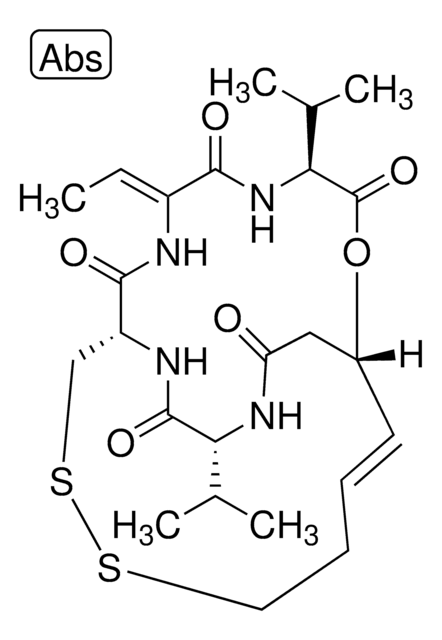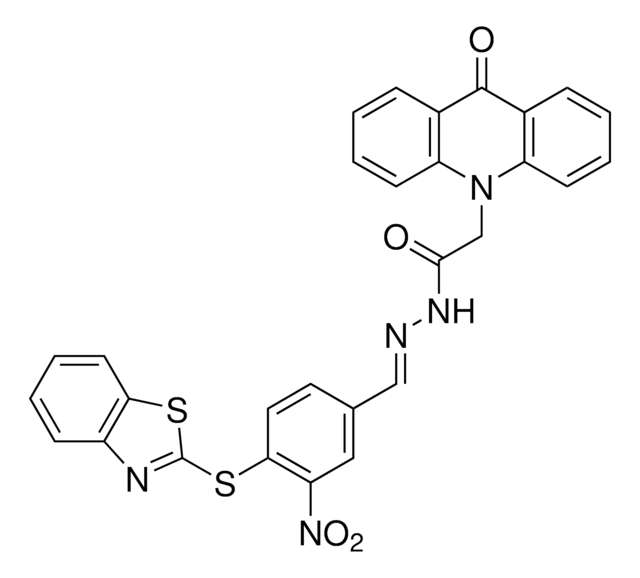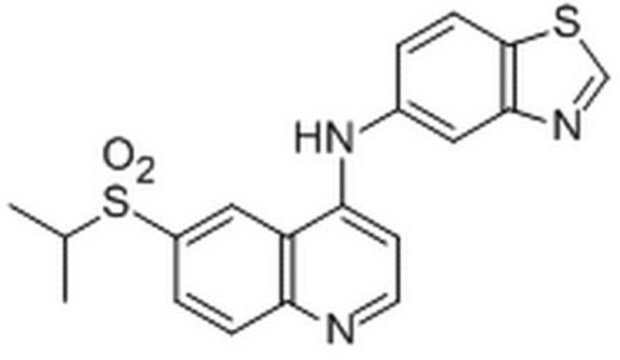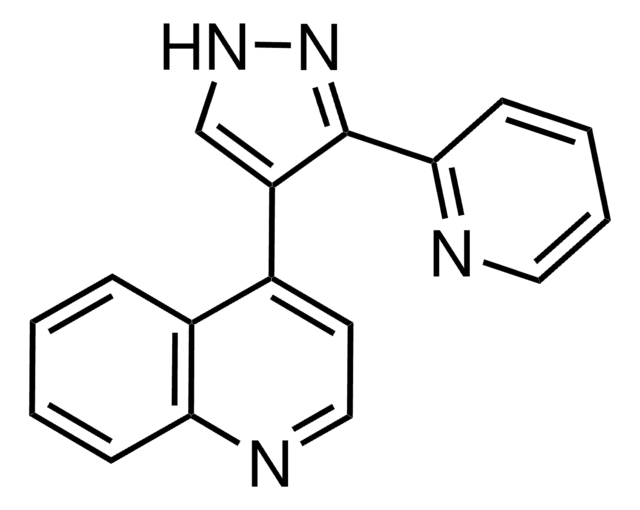SRP4760
ApoE2 human
recombinant, expressed in E. coli, ≥90% (SDS-PAGE), ≥90% (HPLC)
Sinonimo/i:
Apolipoprotein E2
Autenticatiper visualizzare i prezzi riservati alla tua organizzazione & contrattuali
About This Item
Prodotti consigliati
Origine biologica
human
Ricombinante
expressed in E. coli
Saggio
≥90% (HPLC)
≥90% (SDS-PAGE)
Stato
lyophilized
PM
~34 kDa
Confezionamento
pkg of 500 μg
Condizioni di stoccaggio
avoid repeated freeze/thaw cycles
Impurezze
endotoxin, tested
N° accesso NCBI
N° accesso UniProt
Condizioni di spedizione
wet ice
Temperatura di conservazione
−20°C
Informazioni sul gene
human ... ApoE(348)
Descrizione generale
Apolipoprotein E (ApoE) belongs to a group of proteins that bind reversibly with lipoproteins. Significant quantities of ApoE are produced in liver and brain and to some extent in almost every organ. ApoE is an important constituent of all plasma lipoproteins. ApoE exists in three major isoforms; E2, E3, and E4, which differ from one another by a single amino-acid substitution. Compared with E3 and E4, E2 exhibits the lowest receptor binding affinity. E2 allele carriers have significantly lower levels of total cholesterol, low-density lipoprotein cholesterol, and non-high-density lipoprotein cholesterol, as well as increased ApoE levels. The gene encoding this protein is localized on human chromosome 19q13.32. Recombinant human ApoE2 is a 34.3kDa protein containing 300 amino acid residues.
Azioni biochim/fisiol
In addition to facilitating solubilization of lipids, apolipoproteins help to maintain the structural integrity of lipoproteins, serve as ligands for lipoprotein receptors, and regulate the activity of enzymes involved in lipid metabolism. Apolipoprotein E (ApoE) plays an important role in lipid metabolism. It′s interaction with specific ApoE receptor enables uptake of chylomicron remnants by liver cells, which is an essential step during normal lipid metabolism. It also binds with the LDL receptor (Apo B/E). Defects in ApoE are a cause of hyperlipoproteinemia type III.
Stato fisico
Sterile filtered and Lyophilized without additives.
Nota sulla preparazione
Centrifuge the vial prior to opening. Avoid freeze-thaw cycles.
Ricostituzione
Reconstitute in dH2O to a concentration of 0.1-1.0 mg/ml. The solution can then be diluted into other aqueous buffers and store at 4°C for 1 week or –20°C for future use.
Esclusione di responsabilità
RESEARCH USE ONLY. This product is regulated in France when intended to be used for scientific purposes, including for import and export activities (Article L 1211-1 paragraph 2 of the Public Health Code). The purchaser (i.e. enduser) is required to obtain an import authorization from the France Ministry of Research referred in the Article L1245-5-1 II. of Public Health Code. By ordering this product, you are confirming that you have obtained the proper import authorization.
Codice della classe di stoccaggio
11 - Combustible Solids
Classe di pericolosità dell'acqua (WGK)
WGK 3
Punto d’infiammabilità (°F)
Not applicable
Punto d’infiammabilità (°C)
Not applicable
Scegli una delle versioni più recenti:
Certificati d'analisi (COA)
Lot/Batch Number
Non trovi la versione di tuo interesse?
Se hai bisogno di una versione specifica, puoi cercare il certificato tramite il numero di lotto.
Possiedi già questo prodotto?
I documenti relativi ai prodotti acquistati recentemente sono disponibili nell’Archivio dei documenti.
Genome-wide association study identifies a single major locus contributing to survival into old age; the APOE locus revisited.
Deelen J
Aging Cell, 10(4), 686-698 (2011)
Apolipoprotein E isoforms and lipoprotein metabolism.
Phillips MC
IUBMB Life, 66(9), 616-623 (2014)
Apolipoprotein E-low density lipoprotein receptor binding: study of protein-protein interaction in rationally selected docked complexes.
Prevost M and Raussens V
Proteins: Structure, Function, and Genetics, 55(4), 874-884 (2004)
Molecular mechanism of apolipoprotein E binding to lipoprotein particles.
Nguyen D
Biochemistry, 48(13), 3025-3032 (2009)
Pathogenesis of type III hyperlipoproteinemia (dysbetalipoproteinemia). Questions, quandaries, and paradoxes.
Mahley RW
Journal of Lipid Research, 40(11), 1933-1949 (1999)
Il team dei nostri ricercatori vanta grande esperienza in tutte le aree della ricerca quali Life Science, scienza dei materiali, sintesi chimica, cromatografia, discipline analitiche, ecc..
Contatta l'Assistenza Tecnica.








